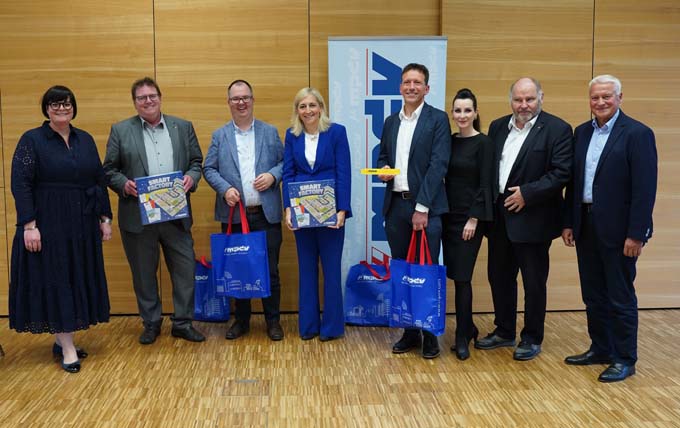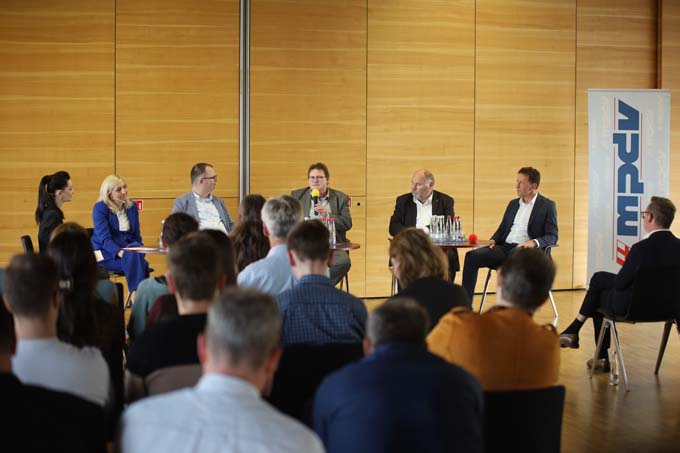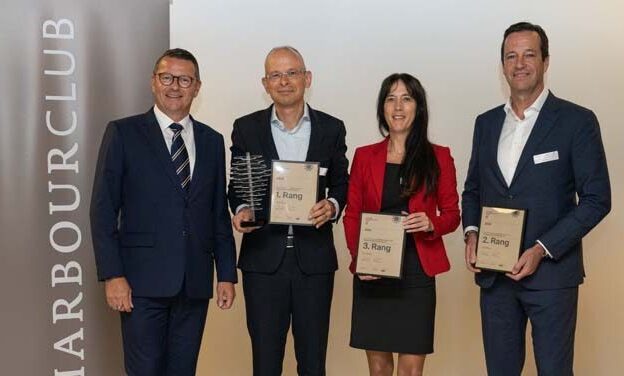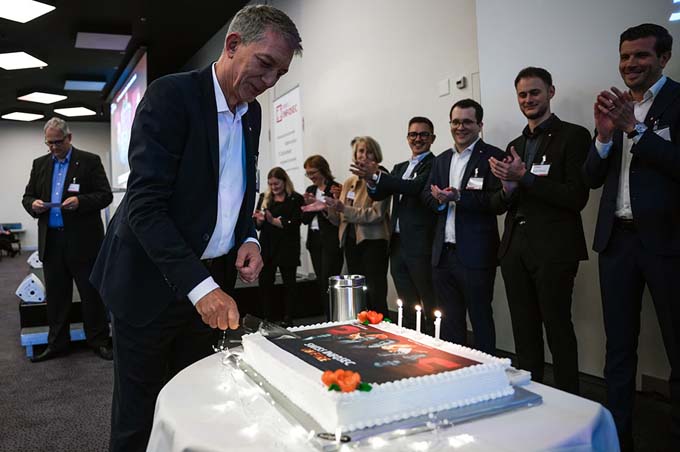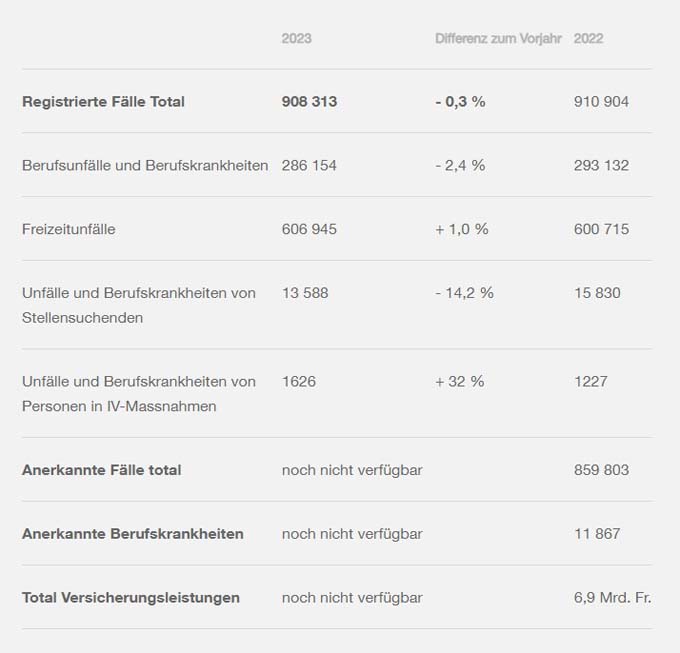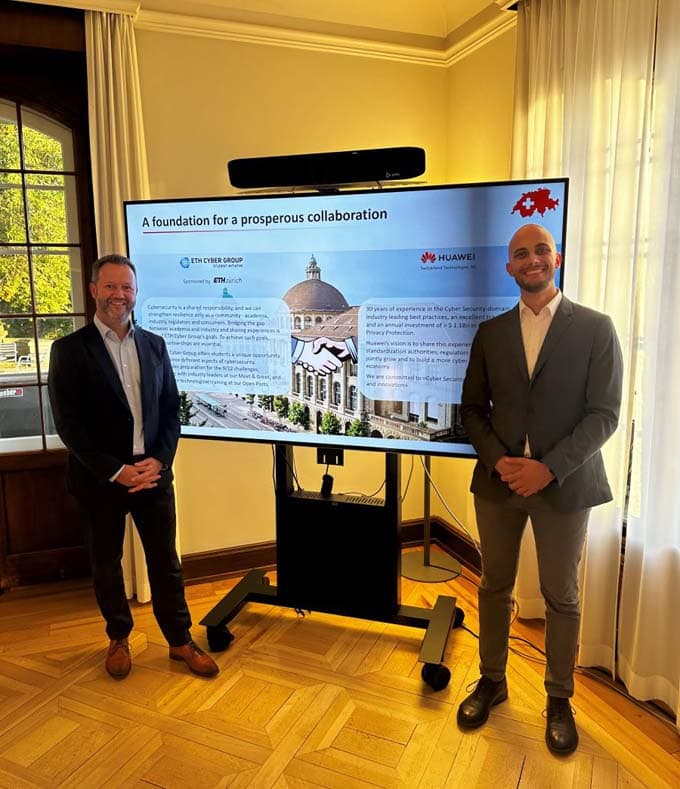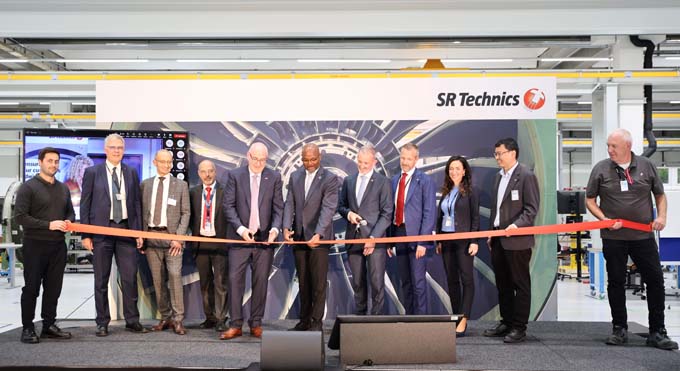Fighting forest fires more efficiently from the air
Whether in Canada, California or the Mediterranean - forest fires are becoming more frequent and, above all, more severe around the world. Heat, drought and wind often turn fires into infernos, especially in summer. The climate crisis is exacerbating the problem. Researchers at the Fraunhofer Institute for High-Speed Dynamics, Ernst-Mach-Institut, EMI and the start-up Caurus Technologies GmbH are responding to the increasing global threat: together they are developing an innovative extinguishing method that can be used to fight large-scale fires more efficiently from the air.

Climate change is altering the quality of forest fires. They are getting hotter and spreading faster. In Canada alone, an area of around 185,000 km burned in 20232 - This is slightly more than the combined area of Greece and Switzerland. In Germany, too, the forest fire season is starting earlier and earlier: in dry regions such as Brandenburg, the first hectares of forest were already on fire on March 1 this year. Researchers at Fraunhofer EMI, in close collaboration with their cooperation partner Caurus Technologies GmbH, want to make a decisive contribution to fighting forest fires from the air with a new type of extinguishing method. The modular system, consisting of hardware and software, combines digital technology with innovative extinguishing approaches and complements conventional extinguishing methods. The Fraunhofer Ahead program is funding the project.
High extinguishing effect due to targeted generation of water aerosol cloud
Most of today's airborne firefighting technology dates back to the 1970s/80s. Helicopters or airplanes still fly over burning forests with buckets of extinguishing water. At an altitude of 40 to 50 meters, the pilots open the bottom of the bucket. Winds and thermals blow the extinguishing water away, which then spreads over a large area - as a result, only a small amount actually ends up in the flames.
"We can provide fire departments with better and more sustainable extinguishing methods and use the amount of extinguishing water with improved discharge precision through digitally supported control," says Dr. Dirk Schaffner, scientist at Fraunhofer EMI in Freiburg. The project partners are also working on an opening mechanism that produces a significantly more efficient extinguishing cloud. This enables both the smallest possible, fine water droplets and the precise placement of the extinguishing cloud close to the source of the fire. These factors have a decisive influence on the extinguishing success by helping to quickly reduce the temperature of the fire and bring it below the ignition point, as well as depriving the fire of the necessary oxygen over a wide area.
"The mechanism allows us to generate a targeted cloud of water aerosol, which is activated at a height of a few meters above or in the flames. The water is not dispersed beforehand, but held together in a bag until just above the fire. Almost 100 percent of the water volume lands precisely in the flames," says Schaffner. The water aerosol cloud succeeds in removing the heat from the fire very quickly. "The heat transfer rate at which energy can be removed from a system depends on the surface area. The more surface area the absorbing medium provides, the faster the heat energy is transferred from the burning medium to the absorbing medium. And the aerosol cloud has a high surface area," explains the researcher. A significantly higher heat transfer rate can therefore be achieved with an aerosol cloud than with a block of water.
The displacement of oxygen also works very well, which weakens the combustion process. Particular attention is paid to compatibility with existing successful extinguishing tactics on the ground and the safety of all emergency personnel.
Efficiency of water use multiplies
The new technology, or the aerosolization of water, is already being used today in high-pressure dispersion nozzles used by firefighters on the ground - the researchers at Fraunhofer EMI and Caurus Technologies are now applying it for the first time in the air, thus significantly expanding the areas of application. Based on studies, the project partners expect the extinguishing effect to be five to ten times greater than that of current systems. "For every liter of water used, we can extinguish a fire five to ten times larger with the new method," says Schaffner, emphasizing one advantage of the technology in view of increasingly scarce water resources worldwide. The safety of the emergency services is also guaranteed, as they do not have to fly unnecessarily close to the source of the fire and can maintain greater dropping distances.
Another plus point: the new extinguishing method contributes to the reduction of CO2 as vegetation fires can be contained much more quickly. This is because forest fires are an immense CO2-emitters: On average, 6.9 gigatons of CO2-emissions were released by forest fires. This is more than double the emissions of all 27 members of the European Union in the same period.
The first prototypes of the innovative extinguishing process have already been successfully tested and the project partners are currently working on a demonstrator.
Source: www.fraunhofer.de








